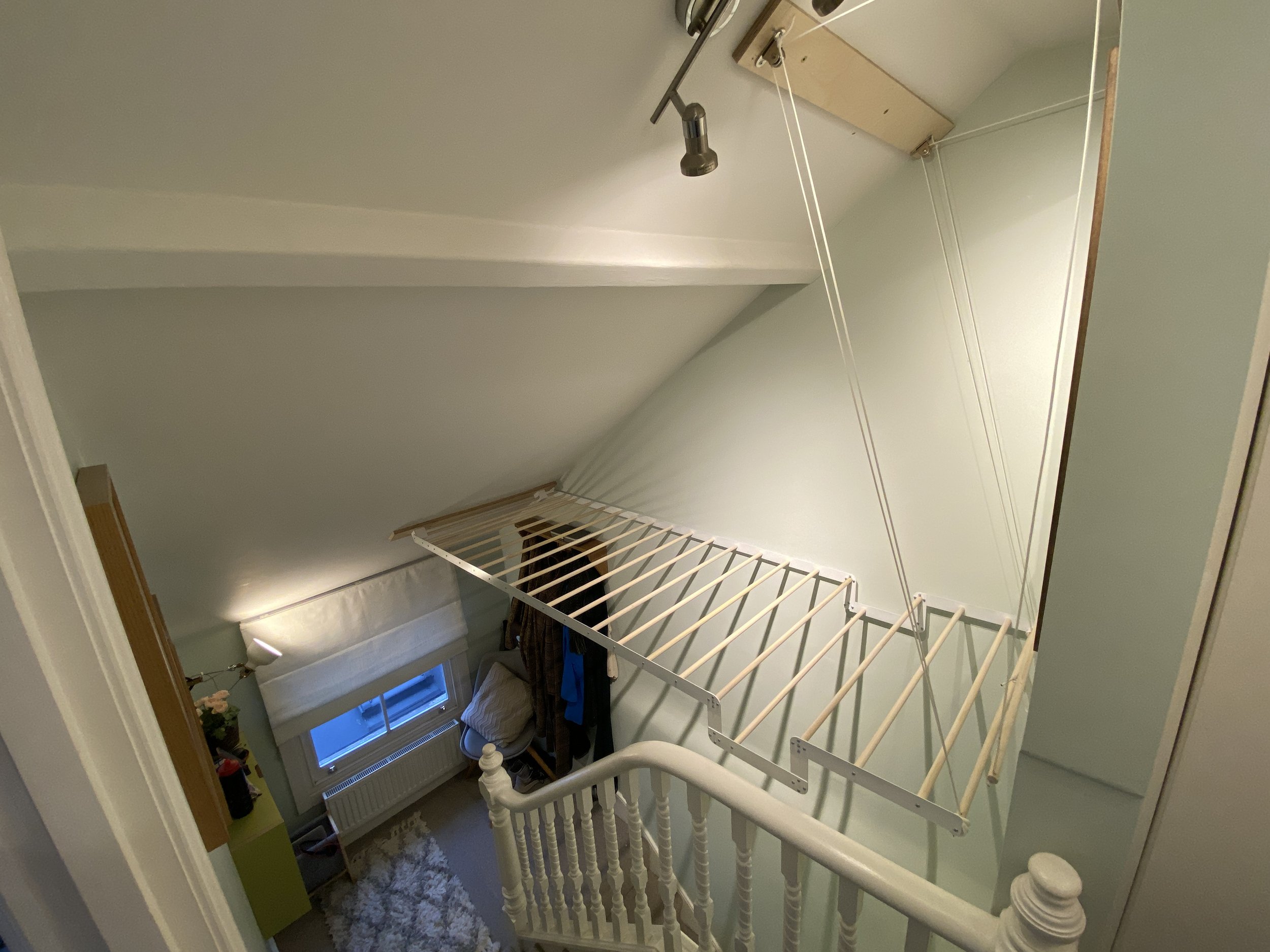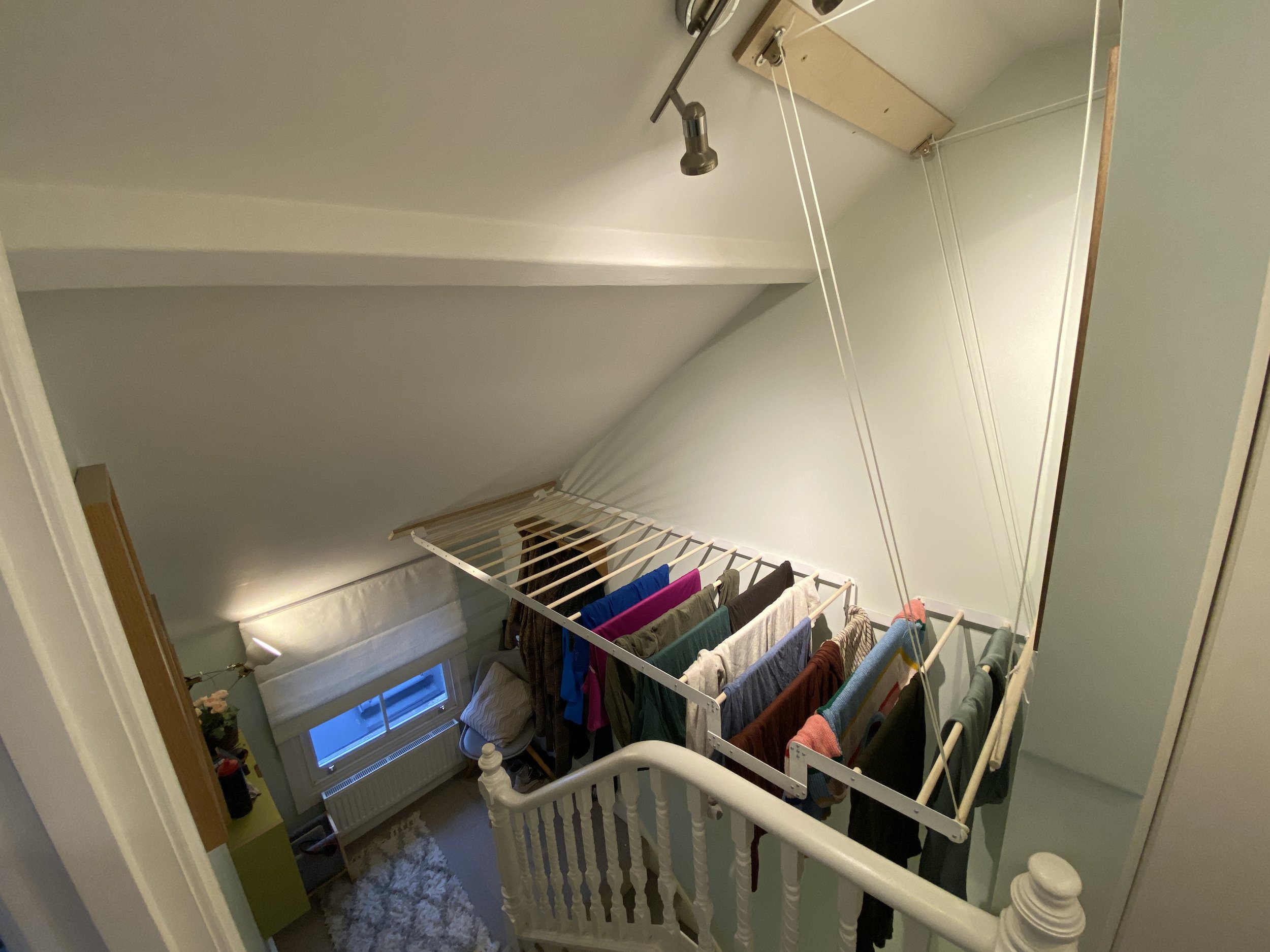Staircase clothes drying rack designed for small apartments
Intro
With limited floor space in my small one bedroom apartment, it can be frustrating to find a place to dry my clothes. I solved this problem by designing and building a custom drying rack.
The rack is designed to utilise the space above the stairs in my apartment. It uses a pulley system to raise and lower the rack, allowing me to easily load it with clothes. I've found that clothes dry within a day, even during the winter, when using this rack.
Comment below with any questions, or if you’re in the UK contact me if you want one of your own.
Demo
Hinges and Pulley Mechanism
The drying rack is mounted to the ceiling with two 3D printed hinges at one end. The other end of the rack is supported by two lengths of paracord, which are tied to each corner and pass through two pulleys mounted on the wall alongside a picture frame. The ends of the paracord are tied to a dowel with a screw eye in the center, which is raised and lowered using a hook. Two additional hooks are screwed into the wall to hold the rack in the raised position.
To keep the rack horizontal in the lowered position, two static lines of paracord are attached to each corner of the rack and fixed to the ceiling. This provides a fail-safe in case the pulley lines break. If this were to happen, the static lines would prevent the rack from rotating too far and potentially hitting someone standing on the stairs.
By supporting the drying rack at each corner with the hinges and pulley mechanism, the rack is prevented from twisting, allowing it to be made from lightweight and inexpensive materials.
How it’s designed and built
The hall and drying rack was 3D modelled before anything was manufactured to check everything would all fit
The drying rack is made of sections of 1.5mm thick mild steel profile, which have been bolted together to form the side frames. These parts were made using a laser cutting service and were degreased, primed, and painted before being assembled.
The slats are made of 15mm diameter Tulipwood dowels, the ends of which have been drilled to accept threaded inserts for attaching them to the frames. When in the raised position, the slats are spaced so clothes will hang with a spacing of 75mm apart from one another.
To avoid risking damage to the ceiling plasterboard, plywood was used to span the joists and bear the weight of the fully loaded drying rack. These plywood pieces will eventually be painted…








